“I bet a lot of people come here to die,” my friend Marty remarked during her visit last week. Her observation, however facetiously said, rang true to me.
Marty, who in the thirty years I’ve known her (we met as next-door neighbors in New York in the mid-‘80s) has become a world-renown documentary photographer specializing in “public art” (graffiti lettering and painted street images), was here in San Miguel de Allende to see me – but also to catch the dazzling Days of the Dead celebrations and displays in this vibrant, old Mexican city.
She had recently come from Vienna, Austria, where she gave a TED talk, titled “Photo Quest: Explorations in Graffiti and Street Art” (soon to be released); and she was on her way to Medellin, Colombia, to give a Power Point presentation primarily to young women street artists.
Thus far in 2016, she told me, she’s traveled the globe as a featured guest presenter at street art gatherings in Bangkok, London, Paris, Berlin, Copenhagen, Toulouse, Tahiti, Guadalajara, as well as Vienna. At 73, she maintains a travel schedule that would exhaust anyone half her age. But my friend Marty is not only intrepid, she’s indefatigable.
It happened that she had a few free days between gigs, so I was happy that she decided to spend them here with me. This was her first Dias de Los Muertos experience in San Miguel, and mine, too, since I only retired here last December. I was delighted to take it all in and to see it through Marty’s eyes.
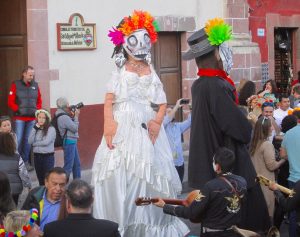
I enjoyed taking pictures of Marty taking pictures:
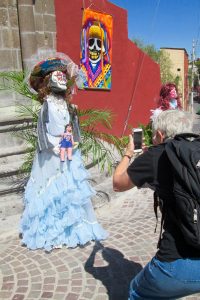
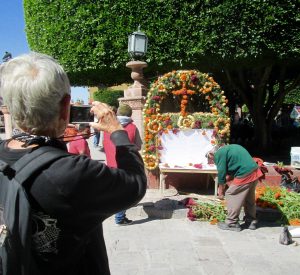
At the local cemetery we saw countless families tidying their loved-ones’ graves, cleaning the stones, decorating the plots with flowers – especially orange-colored marigolds, meant to symbolize the wondrous migration of monarch butterflies – and offering their dearly-departeds’ favorite foods.
I observed tiny, wizened old women, half-hidden under shawls, seemingly choreographing the families’ duties, as if to say: This is what I want you to do for me when I die – which will be soon. The wishes of the almost-dead.
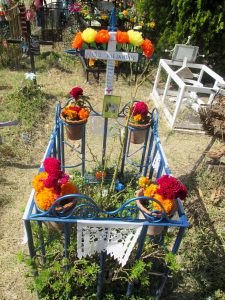
Near the grand Parroquia church and around the Jardin beautiful altars were set up, some more reverent than others.
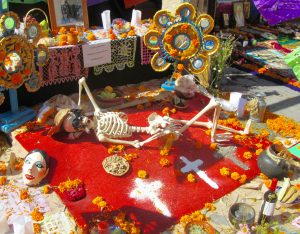
The Mexican attitude toward death, I saw during these Days of the Dead, is enviable – natural, accepting, embracing, realistic, even fun-loving. Their loved ones who’ve passed on are not only not forgotten, they’re visited and celebrated every year at this time. Yes, I have to say that, relatively speaking, this is a good place to die. And Marty is right, I’m sure a lot of people come here to do just that.
~ ~ ~ ~ ~ ~
[NOTE: My friend Marty’s first book, SUBWAY ART (by Martha Cooper and Henry Chalfant, Thames & Hudson Publishers, 1984), which has undergone multiple printings and has been translated into at least five languages, quickly became “the bible” for graffiti writers worldwide and is credited with creating “the biggest art movement in the history of the world,” according to the TEDxVienna brochure. Visit Marty on Instagram at @marthacoopergram.]
